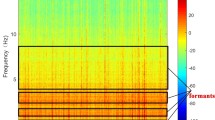Abstract
In the present work, a classification approach of acoustic emission (AE) signals that combines unsupervised and supervised methods was presented to investigate damage mechanisms in hybrid fibres reinforced epoxy composites. These ends were elaborated by hybridising unidirectional (UD) flax and glass fibres and by using a vacuum infusion technique. First, specific tensile tests of various UD flax and glass fibres specimens were coupled with AE monitoring. This enables us to construct different datasets of unlabelled AE signals. Then, a clustering method, named incremental clustering (IC), was used to assign each AE signal with a typical damage mechanism according to its characteristic features. The decision rule of the IC was based on the principle of support vector data description (SVDD). The IC allowed the building of a training database that includes AE signals of five damage mechanisms, namely matrix cracking, flax fibre-matrix debonding, glass fibre matrix debonding, flax fibre breakage, and glass fibre breakage. Finally, the training database was coupled with the Support Vector Machines (SVM) classifier to identify the damage mechanisms of two hybrid flax-glass fibre composites. The experimental results indicate that the classifier model can predict the damage mechanisms with an accuracy of 93.13%. In conclusion, the proposed classification approach proved promising to investigate the damage mechanisms of hybrid composites.










Similar content being viewed by others
References
Pickering, K.L., Efendy, M.G.A., Le, T.M.: A review of recent developments in natural fibre composites and their mechanical performance. Compos. Part Appl. Sci. Manuf. 83, 98–112 (2016). https://doi.org/10.1016/j.compositesa.2015.08.038
Faruk, O., Bledzki, A.K., Fink, H.-P., Sain, M.: Progress report on natural fiber reinforced composites. Macromol. Mater. Eng. 299(1), 9–26 (2014). https://doi.org/10.1002/mame.201300008
Yan, L., Kasal, B., Huang, L.: A review of recent research on the use of cellulosic fibres, their fibre fabric reinforced cementitious, geo-polymer and polymer composites in civil engineering. Composite B 92, 94–132 (2016). https://doi.org/10.1016/j.compositesb.2016.02.002
Saidane, E.H., Scida, D., Assarar, M., Sabhi, H., Ayad, R.: Hybridisation effect on diffusion kinetic and tensile mechanical behaviour of epoxy based flax–glass composites. Compos. Part Appl. Sci. Manuf. 87, 153–160 (2016). https://doi.org/10.1016/j.compositesa.2016.04.023
Swolfs, Y., Verpoest, I., Gorbatikh, L.: Recent advances in fibre-hybrid composites: materials selection, opportunities and applications. Int. Mater. Rev. 64(4), 181–215 (2019). https://doi.org/10.1080/09506608.2018.1467365
Li, Y., Yi, X., Yu, T., Xian, G.: An overview of structural-functional-integrated composites based on the hierarchical microstructures of plant fibers. Adv. Compos. Hybrid Mater. 1(2), 231–246 (2018). https://doi.org/10.1007/s42114-017-0020-3
Dashtizadeh, Z., et al.: Mechanical and thermal properties of natural fibre based hybrid composites: a review. Pertanika J. Sci. Technol. 25(4), 1103–1122 (2017)
Saidane, E.H., Scida, D., Assarar, M., Ayad, R.: Damage mechanisms assessment of hybrid flax-glass fibre composites using acoustic emission. Compos. Struct. 174, 1–11 (2017). https://doi.org/10.1016/j.compstruct.2017.04.044
Saidane, E.H., Scida, D., Pac, M.-J., Ayad, R.: Mode-I interlaminar fracture toughness of flax, glass and hybrid flax-glass fibre woven composites: failure mechanism evaluation using acoustic emission analysis. Polym. Test. 75, 246–253 (2019). https://doi.org/10.1016/j.polymertesting.2019.02.022
M. Ben Ameur et al., “Investigation and identification of damage mechanisms of unidirectional carbon/flax hybrid composites using acoustic emission,” Eng. Fract. Mech., vol. 216, p. 106511, Jul. 2019, doi: https://doi.org/10.1016/j.engfracmech.2019.106511.
Saeedifar, M., Zarouchas, D.: Damage characterization of laminated composites using acoustic emission: a review. Composite B 195, 108039 (2020). https://doi.org/10.1016/j.compositesb.2020.108039
Panek, M., Blazewicz, S., Konsztowicz, K.J.: Correlation of acoustic emission with fractography in bending of glass-epoxy composites. J. Nondestruct. Eval. 39(3), 63 (2020). https://doi.org/10.1007/s10921-020-00706-0
Pashmforoush, F., Khamedi, R., Fotouhi, M., Hajikhani, M., Ahmadi, M.: Damage classification of sandwich composites using acoustic emission technique and k-means genetic algorithm. J. Nondestruct. Eval. 33(4), 481–492 (2014). https://doi.org/10.1007/s10921-014-0243-y
Han, W., Gu, A., Zhou, J.: A Damage modes extraction method from AE signal in composite laminates based on DEEMD. J. Nondestruct. Eval. 38(3), 70 (2019). https://doi.org/10.1007/s10921-019-0609-2
Saravanakumar, K., Lakshminarayanan, B.S., Arumugam, V.: Effect of thickness and denting behavior of glass/epoxy laminates subjected to quasi-static indentation (QSI) loading under acoustic emission monitoring. J. Nondestruct. Eval. 37(3), 63 (2018). https://doi.org/10.1007/s10921-018-0519-8
Ding, P., Li, Q., Huang, X.: Classification of acoustic emission sources produced by carbon/epoxy composite based on support vector machine. IOP Conf. Ser. Mater. Sci. Eng. 87, 012002 (2015). https://doi.org/10.1088/1757-899X/87/1/012002
Saeedifar, M., Saleh, M.N., De Freitas, S.T., Zarouchas, D.: Damage characterization of adhesively-bonded Bi-material joints using acoustic emission. Compos. Part B Eng. 176, 107356 (2019). https://doi.org/10.1016/j.compositesb.2019.107356
Satour, A., Montrésor, S., Bentahar, M., Boubenider, F.: Wavelet based clustering of acoustic emission hits to characterize damage mechanisms in composites. J. Nondestruct. Eval. 39(2), 37 (2020). https://doi.org/10.1007/s10921-020-00678-1
Ech-Choudany, Y., Assarar, M., Scida, D., Morain-Nicolier, F., Bellach, B.: Unsupervised clustering for building a learning database of acoustic emission signals to identify damage mechanisms in unidirectional laminates. Appl. Acoust. 123, 123–132 (2017). https://doi.org/10.1016/j.apacoust.2017.03.008
Chilali, A., Zouari, W., Assarar, M., Kebir, H., Ayad, R.: Analysis of the mechanical behaviour of flax and glass fabrics-reinforced thermoplastic and thermoset resins. J. Reinf. Plast. Compos. 35(16), 1217–1232 (2016). https://doi.org/10.1177/0731684416645203
Tax, D.M.J., Duin, R.P.W.: Support vector data description. Mach. Learn. 54(1), 45–66 (2004). https://doi.org/10.1023/B:MACH.0000008084.60811.49
Wang, J., Lu, H., Plataniotis, K.N., Lu, J.: Gaussian kernel optimization for pattern classification. Pattern Recognit. 42(7), 1237–1247 (2009). https://doi.org/10.1016/j.patcog.2008.11.024
Maillet, E., Baker, C., Morscher, G.N., Pujar, V.V., Lemanski, J.R.: Feasibility and limitations of damage identification in composite materials using acoustic emission. Compos. Part Appl. Sci. Manuf. 75, 77–83 (2015). https://doi.org/10.1016/j.compositesa.2015.05.003
Cheour, K., Assarar, M., Scida, D., Ayad, R., Gong, X.-L.: Long-term immersion in water of flax-glass fibre hybrid composites: effect of stacking sequence on the mechanical and damping properties. Fibers Polym. 21(1), 162–169 (2020). https://doi.org/10.1007/s12221-020-9494-7
Author information
Authors and Affiliations
Corresponding author
Additional information
Publisher's Note
Springer Nature remains neutral with regard to jurisdictional claims in published maps and institutional affiliations.
Rights and permissions
About this article
Cite this article
Ech-Choudany, Y., Scida, D., Assarar, M. et al. Implementation of Supervised Classification Method of Acoustic Emission Signals: Damage Mechanisms Identification of Non-hybrid and Hybrid Flax Fibre Composites. J Nondestruct Eval 41, 19 (2022). https://doi.org/10.1007/s10921-022-00850-9
Received:
Accepted:
Published:
DOI: https://doi.org/10.1007/s10921-022-00850-9




